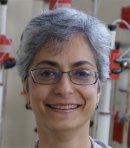|
Plenary
Lecture
Butantan Pulmonary Surfactant Development
(Not a Merely Me-Too)

Professor Flavia
Saldanha Kubrusly
Biotechnology Center, Instituto Butantan
Av. Vital Brasil, 1500
05503-900- Brazil
E-mail:
kubruslyfs@butantan.gov.br
Abstract: The public
mission of Instituto Butantan
(Brazil) engages undoubtedly the
reduction of infant mortality rate
by being responsible for 80%
childhood immunization. One main
cause of postnatal mortality is
associated with respiratory
distress syndrome (RDS) caused by
pulmonary surfactant deficiency.
Synthetic or biologically derived
surfactants has been developed to
improve lung function and to
decrease the mortality associated
with RDS. In 1998 Butantan has
begun to develop a porcine
pulmonary surfactant (Butantan
surfactant). Butantan idea was to
offer an alternative surfactant
replacement therapy mainly for
developing countries, focus on low
cost but same efficacy and safety.
The Butantan preparation was
obtained from ground porcine lungs
by organic extraction coupled with
adsorption on a cellulose
derivative. The lungs were kindly
donated by a major Brazilian food
producer (Sadia). The key
advantages of this preparation are
to avoid at any volume high-speed
centrifugation or extra steps of
liquid-gel chromatography. The in
vivo evaluation of Butantan
surfactant compared to other
commercially available surfactants
using the preterm rabbit model
showed similar pulmonary effects,
improving pulmonary functions as
assessed by the decrease of the
ventilatory pressure and the
increase of the dynamic
compliance. After having completed
all of the pre-clinical test
phases, the validation of the
medicine was initiated, covering
19 institutions throughout Brazil.
The clinical trial (Phases II and
III) showed that both the imported
and the Butantan surfactant are
equally efficient. "The quantity
of the product necessary for the
survival of the children is also
the same" commemorates Prof.
Isaias Raw, the coordinator of the
project and its main incentive".
Currently, investments to make the
surfactant plant production as
safe as possible to the
environment, and also sustainable
still concern, since the hot
points of the industrial plant
besides the surfactant yield, are
the completely recovery of the
solvents and the cellulose
derivative to mitigate costs. The
search of promissory therapeutic
molecules on porcine pulmonary
extract usually rejected during
surfactant production is another
possibility to aggregate extra
biotechnological value to the
process. Purification of
surfactant proteins and
purification of protease
inhibitors are examples of this
virtuous circle. In a near future
to join these proteins to the
surfactant preparation will open
new frontiers to the surfactant
replacement therapy or other not
straight related to surfactant.
Butantan surfactant is by
definition a me-too (drugs that
apparently do not offer any
distinction from existing therapy)
but this experience is also a good
example of the Brazilian
governmental initiatives to
stimulate the research and
development of the
biopharmaceutical sector in
Brazil.
Supported by: Fundacao Butantan,
FAPESP, CNPq, MS.
Brief Biography of the Speaker:
Flavia Saldanha Kubrusly has
studied Biology and received her
master degree from Universidade
Estadual de Campinas (UNICAMP) in
1984 and got her PhD from
Universidade de Sao Paulo (USP) in
1992. Both universities are
located in Sao Paulo, Brazil.
Since 1987, she has a permanent
R&D position at the Instituto
Butantan, Sao Paulo, Brazil. Most
of her career is dedicated to
vaccine production and control
(measles, hepatitis B, rabies). In
the last ten years, she is also
dedicated to the purification and
production of medical drugs
derived by direct extraction from
native biological source
(pulmonary surfactant, aprotinin,
vaccine adjuvant) under
coordination of Prof. Dr. Isaias
Raw, her former post doctoral
supervisor (1994) and the Head of
the Butantan Foundation. She has
authored more than 70 publications
(20 original scientific papers,
one book chapter, one scientific
prize, four patents and more than
50 presentations in conferences).
Since 2000, she supervises
graduates on the Biotechnology
Graduate Interunit Program (USP),
concluding at the present, three
masters and one PhD.
|
